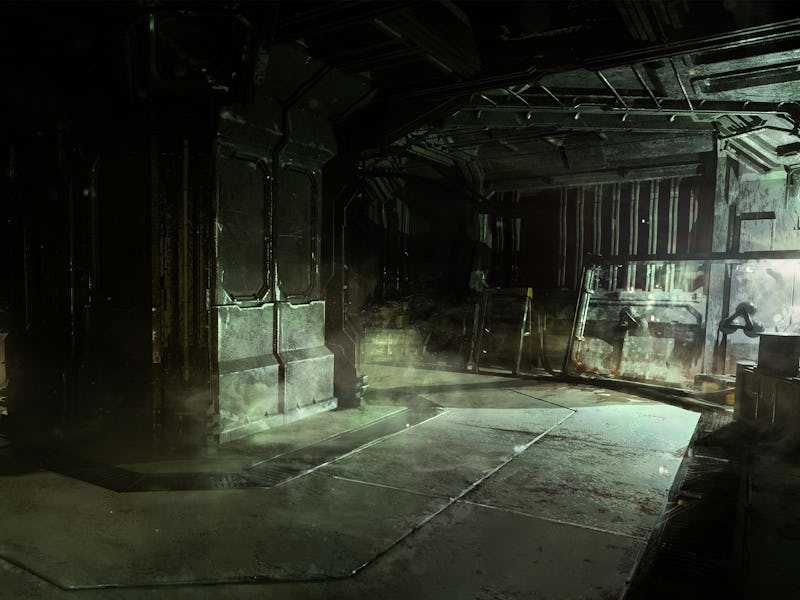15 Years Ago, an Iconic Sci-Fi Horror Game Redefined the Entire Genre
The survival horror genre still feels that impact today.

The early 2000s witnessed a boom in the survival horror game genre. Franchises like Silent Hill and Resident Evil promptly scratched the itch for immersive, nerve-wracking experiences that hinged on combat-friendly third-person perspectives with lore-heavy worlds that became more fleshed out with every installment. The inexplicable thrill of walking in the shoes of a protagonist compelled to survive amid challenging, hellish landscapes became the foundation for experimental gameplay mechanics, such as snapping photographs to defeat spirits in games like Fatal Frame II: Crimson Butterfly.
While the vignettes of survival horror eventually started to feel oversaturated, a gaping void still existed when it came to survival horror in space, an area that remained untapped despite its obvious potential. Entries like Alien: Resurrection prioritized first-person shooter mechanics over genre-specific narrative elements in a way that hampered its horror elements, while adjacent projects fell through altogether, lost in the debris of oblivion. This is when Dead Space burst into the scene in 2008, forever altering our relationship with immersion in high-intensity horror environments in space.
Dead Space left an indelible mark on the survival horror genre that can be felt even today.
Dead Space does not indulge in pretension when it comes to its painfully derivative core premise. If anything, the game wears its sci-fi horror influences on its sleeve, smartly paying homage to the grislier aspects of Event Horizon and Alien, while using 2005’s Resident Evil 4 as a gameplay blueprint to create something unique. Set in 2508, during a time when humanity undergoes near-extinction due to a dearth of resources, Dead Space is firmly rooted in one Isaac Clarke, who must survive a terrifyingly impossible scenario. The game makes use of standard space colonization and alien artifact tropes to spin a rivetingly terrifying tale of dread and isolation.
A resource-harvesting spacecraft, the USG Ishimura, sends out a distress call mid-mission on the planet Aegis VII, and Isaac, who is aboard the rescue craft with his crew, ventures inside with his team after the docking procedure goes awry. Once inside, Ishimura looks and feels like a tomb, as the ship’s crew are nowhere to be seen, and a deathlike silence hangs over the connecting hallways of the desolate docking bay. That is, until most of the rescue crew is slaughtered by mutated creatures that travel through the vents and lurk in the darkness ready to pounce. Isaac, who is primarily an engineer, must make his way through the massive ship, unlocking levels by solving puzzles and navigating challenging environments, all while contending with the Necromorphs, who can only be taken down via limb dismemberment.
Dead Space’s unique combat set it apart from the likes of Resident Evil and Silent Hill.
The word “immersion” is often thrown around in video game discourse, and it takes on context-dependent definitions that vary as according to player preferences and expectations. However, Dead Space retrofits immersive gameplay into its very soul, forgoing standard in-game HUDs in favor of components that are an integral part of the environment, such as Isaac’s health bar, which is indicated on the spine of his suit at all times.
There are no game-pausing objectives that pop up midway, instead, they’re integrated in the form of holographic projections from Isaac’s suit, and none of the exposition dumps or context clues feel non-diegetic. When Isaac moves through the retrofuturist hallways of the Ishimura, we are locked in on survival and resource management alone, while the lore develops naturally with real-time forward progression.
As combat is the heart of Dead Space’s survival strategy, the game’s insistence on limb dismemberment instead of traditional headshots or button-smashing heightens the anxiety that builds as Isaac ventures into the bowels of the ship. Limited health bars and ammunition, coupled with the unpredictability of enemy spawns, cast a darker shadow on the mystery behind the Necromorphs and their origin, and the nature of these intense encounters makes survival feel thoroughly earned.
Button smashing won’t save you this time.
Moreover, Isaac’s stark silence only serves to deepen the bond between the player and protagonist, despite it being a double-edged sword in terms of character development — an aspect that is revised in the recent Dead Space Remake, where Isaac has several dialogue options that help grant greater insight into his psyche.
Speaking of the Dead Space remake (which deliberately builds itself on the merits of the original), the fact that the new iteration only improves upon its predecessor without drastically reimagining its DNA is proof of the latter’s timeless appeal. Yes, a few structural redesigns are thrown in here and there to keep up with the times, but the remake is intensely loyal to the beats of the original and focuses on cranking up the already excellent gameplay to a solid 11.
Fifteen years after its release, Dead Space still feels like a uniquely twisted survival space horror experience, despite the triteness of the genre tropes it embraces. When Isaac uses Stasis to momentarily slow down time or floats in zero gravity in certain segments, we are transported right with him, into a future torn apart by greed and delusion. Even after Isaac escapes the Ishimura, the incessant clanking of its interiors haunts him, just like it haunts us to this very day.
This article was originally published on